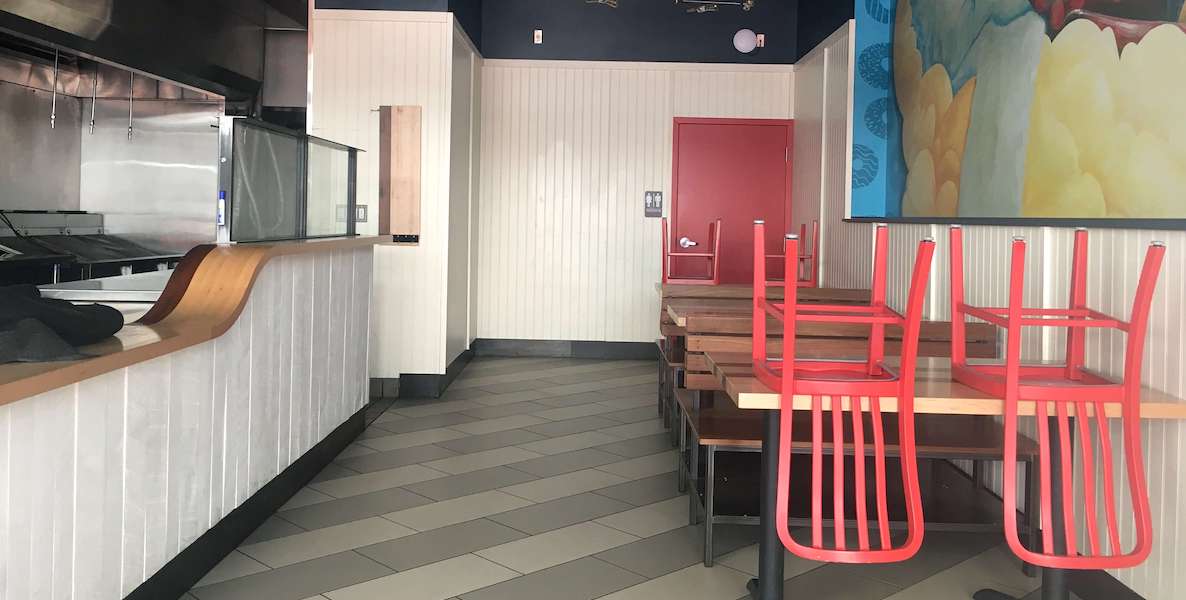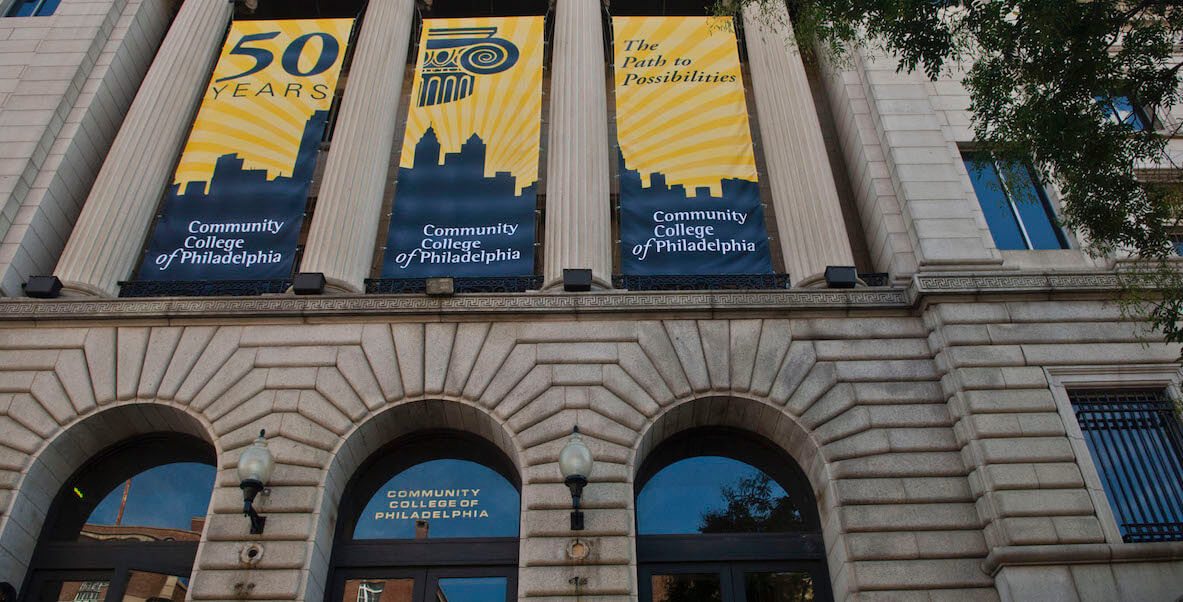The numbers are simply staggering. As of April 30, 30 million Americans had filed for unemployment since the onset of the Covid-19 crisis. As the United States slowly begins to re-open, the only certainty is that our uncertainty about how best to contain the contagion rules out any quick economic rebound.
For the foreseeable future, our economy will stumble through a slow thaw and millions of people will be out of work. Now is the time to help these unemployed workers and young first-time college students acquire the skills they will need to thrive in our tech-powered economy.
We know that unemployment hurts individuals, families and communities. Worse still, this damage only intensifies the longer people are out of work. Recent history offers a case in point.
in a nutshellThis story
As the federal government takes action to address the acute emergency, it must also prepare for what comes next. The unprecedented interplay of pandemic, economic shutdown and labor market crisis demands a powerful federal response. Congress needs to invest in better alignment and coordination across private companies, business organizations, community and technical colleges (CTCs), four-year colleges and universities, workforce development providers, philanthropies, nonprofit organizations and manufacturing and agriculture extension services—all of which can help strengthen the workforces and the economies of our cities, metropolitan areas and rural communities.
For the foreseeable future, our economy will stumble through a slow thaw and millions of people will be out of work. Now is the time to help these unemployed workers and young first-time college students acquire the skills they will need to thrive in our tech-powered economy.
Only significant federal investment in workers’ skills can ensure that full recovery, when it comes, is as productive and inclusive as possible.
Last week the House Committee on Education and Labor introduced the $15 billion Relaunching America’s Workforce Act, the first salvo in the fight for a better post-Covid-19 future for America’s workers. The proposed legislation builds upon precedents established by the Great Recession-era American Recovery and Reinvestment Act of 2009 (ARRA) as well as the workforce system streamlining authorized by the Workforce Innovation and Opportunity Act of 2014.
Of particular note in the House proposal is its call for a relaunch of the Trade Adjustment Assistance Community College and Career Training (TAACCCT) competitive grant program. The $1.9 billion TAACCCT program remains the single largest federal investment in CTCs ever made. The scale of this investment demonstrated a recognition that CTCs have an integral role to play in our economic ecosystem.
These often-unsung institutions provide affordable educational opportunities in America’s rural, urban and suburban communities and act as vital anchors in our local economies. They frequently work hand-in-glove with corporations in a wide range of industry sectors to design training curricula that are fit to purpose and provide students with the skills they need to find work that pays well.
Third-party assessment has consistently praised the TAACCCT program as an effective and efficient use of federal resources. Between 2011 and 2014, the TAACCCT program made grants to 630 community colleges and 99 four-year colleges nationwide. Nearly $400 million went to 146 single institutions, $1.1 billion went to 84 single-state consortia, and over $400 million went to 26 multistate consortia.
Community colleges and other higher ed players will be the work horses of the recovery but will require systematic support—we need to build strength across the entire ecosystem of workforce development and higher education institutions.
This emphasis on consortia-driven efforts affirmed the interconnected nature of education, workforce training, and economic growth. The manufacturing and healthcare sectors had the most grant activity, followed by energy, IT, transportation and logistics, green technology, and agriculture (in that order).
The $20 million MOHealthWINs program reflects the potential of the TAACCCT program to drive impact for people and economies. MOHealthWINs was a four-year effort to expand healthcare education across a 13-member consortium of Missouri community colleges. The program sought to address an expected 25 percent shortfall in trained healthcare professionals by training and connecting Missouri residents with better-paying healthcare jobs in high-demand fields such as health informatics, therapeutic services, diagnostic services and support services.
MOHealthWINs focused on accelerating careers among dislocated, unemployed and underemployed workers, as well as individuals who lacked the appropriate academic credentials or skills certifications by helping participants earn stackable credentials that could count towards certificates or degrees.
The curriculum was designed in consultation with over 200 industry partners in Support trade schools near PhillyDo Something
The Relaunching America’s Workforce Act, to its credit, recommends $2 billion to relaunch the TAACCCT program. We believe that this proposal, and other education and workforce related proposals, must address five key questions:
1. Is the investment large enough to meet the challenge? The original $1.9 billion TAACCCT program enrolled 500,000+ students who together earned more than 350,000 credentials. Given the proven success of this model and the magnitude of unemployment expected in the next few years, we believe that the Covid-19 version of this program should, at a minimum, serve three times as many students and be conservatively priced at $6 billion.
2. Is the investment sufficiently targeted? The average student served under the ARRA-era TAACCCT program was 31 years old and 60 percent were male. Although the percentage of students of color enrolled was comparable to national demographics, it was lower than what we would typically expect to see at CTCs. Based on the ARRA experience, we believe allocation criteria should be weighted to reflect the fact that the Covid-19 crisis has exacerbated existing racial and ethnic disparities, with a disproportionately negative effect on the physical and economic well-being of communities of color. Care should also be taken to reduce imbalances in the age and gender of students.
3. Is the investment sufficiently flexible? Workforce development programs have historically been short-lived and highly categorical, serving specific groups of workers who face similar challenges. The success of the TAACCCT program resided in its ability to help CTCs (in close concert with employers and other key stakeholders) align with the distinctive strengths of their local economies and give workers and students the ability to gain the skills necessary to contribute to advanced sectors of the U.S. economy, including health care, manufacturing, renewable energy and financial and other services.
Flexibility in terms of time is also critical. The original TAACCCT program dispersed funds over four years, with many recipients receiving time extensions. This round of TAACCCT competitive grants should acknowledge that collaboration and systems change take time. We recommend that Congress authorize the TAACCCT grant support for up to six years (provided that the grantee is showing good progress).
4. Does the approach build on proven practices and lessons learned? We’ve learned a lot in the past decade about how to make it easier for students to earn a postsecondary credential or degree. We know that a guided pathways approach can mean the difference between making it through and dropping out. We know that for many lower-income individuals, financial aid, strong guidance, and wraparound support services like childcare have to be part of the picture. We’ve seen how strong sector-focused collaboration with the private sector can help CTCs focus on training students for living-wage jobs in their regions.
We have a treasure trove of best practices backed by data and a number of exemplary institutions showing the way forward. Federal investments that build on these hard-won insights will help CTCs move farther faster.
5. To what extent can other federal resources be aligned in support of the proposed investment? We believe that there are additional assets in the federal government’s arsenal that should be put to use. Establishing a program patterned after NSF’s Advanced Technological Education (ATE) regional centers could provide additional support for CTC program redesign and delivery, improved CTC alignment with regional labor markets, and student recruitment.
The first ATE regional centers were funded in 2001 to help CTCs better engage with their local economies. They focused on systems change and program redesign in order to prepare more workers for careers in high-demand high-tech fields. Acting in large part as workforce intermediaries, these regional centers fostered much-needed collaboration among CTCs, industry, and other educational institutions in the area.
Similarly, the National Institute of Standards and Technology’s Manufacturing Extension Partnership (MEP) sees workforce development as an explicit part of its mission. Some of the MEP centers, including MAGNET in Northeast Ohio, have been key partners in the development of manufacturing-focused workforce training systems (many of which are delivered via local CTCs). Alignment with relevant federal programs and resources will help ensure the greatest possible return on investment.
As Congress proceeds with education and workforce investments, we also believe it is essential to enable a higher level of coordination across multiple levels of government and sectors of society. Collaboration and common-sense alignment have been sorely lacking in the crisis response to date.
To that end, we propose that Congress establish a five-year National Commission for Postsecondary Progress, with $10 million in annual funding. This new entity would provide coordination across the levels of government involved in education funding and delivery and cohesion across disparate efforts throughout the country.
As in past economic crises, a sizable investment in the education and skills of America’s workers can improve people’s earning potential and prepare our economy for growth and help families, businesses and communities come back stronger.
Composed of stakeholders from education, industry, labor, government, and philanthropy, this commission would facilitate the sharing and scaling of proven, data-driven approaches to postsecondary completion and provide a strong feedback loop between local action and federal investment. The commission would not push for a one-size-fits-all approach; rather, it would aggregate insights across all levels (federal, state, local) and advocate programming tailored to local conditions.
We recognize that the question of how best to support skill building and the attainment of post-secondary credentials is extremely complex and requires a full-system, multifaceted approach. Community colleges and other higher ed players will be the work horses of the recovery but will require systematic support—we need to build strength across the entire ecosystem of workforce development and higher education institutions.
Expanded Pell grant eligibility, wraparound supports such as childcare and SNAP eligibility, improved data systems that connect high schools, colleges and the job market to provide clarity on program efficacy, and broadband infrastructure are just a few of the considerations that can ensure these investments have the greatest positive impact.
The Virus in the City seriesRead More
At the local level, community leaders should take action to make CTCs true anchors for place-based economic growth. For example, converting existing commercial real estate for CTC purposes can help revitalize distressed business districts by increasing foot traffic and boosting demand for goods and services in the area.
As in past economic crises, a sizable investment in the education and skills of America’s workers can improve people’s earning potential and prepare our economy for growth and help families, businesses and communities come back stronger.
For maximum benefit, we will also need to leverage, engage and better connect the broader ecosystem—CTCs, four-year colleges and universities, other anchor institutions, corporations, cluster intermediaries, local and state government, philanthropy, and nonprofit organizations—that provides the platform for our innovative and advanced economy. Significant investment in the TAACCCT program and other proven efforts will be critical if we hope to recover fully from this unprecedented crisis.
Bruce Katz is the director of the new Nowak Metro Finance Lab at Drexel University, created to help cities design new institutions and mechanisms that harness public, private and civic capital for transformative investment. Mary Jean Ryan was the founding director of the Community Center on Education Results (headquartered in Seattle) and a former chair of the Washington State Board of Education. Jessica A. Lee is an independent scholar, with a PhD in history from the University of Washington. Courtney Kishbaugh is a senior associate at New Localism Associates.
Header CCPedu via Wikimedia









